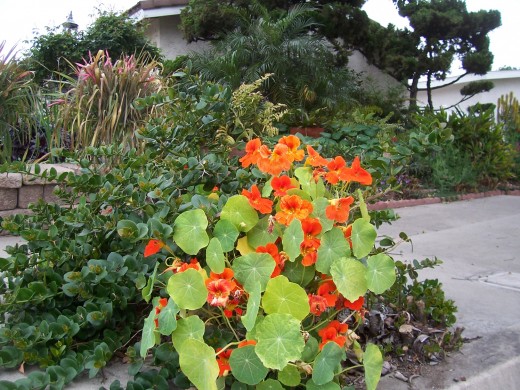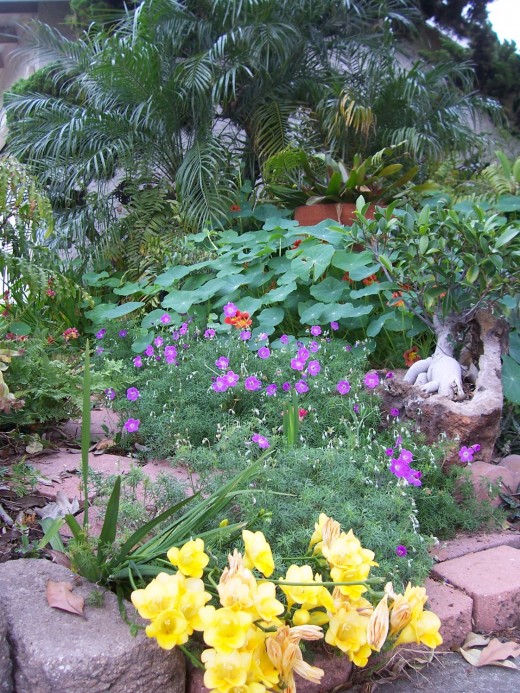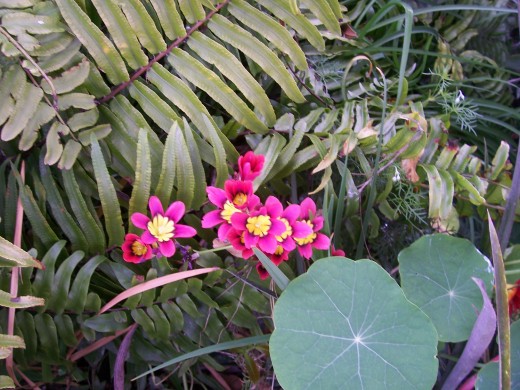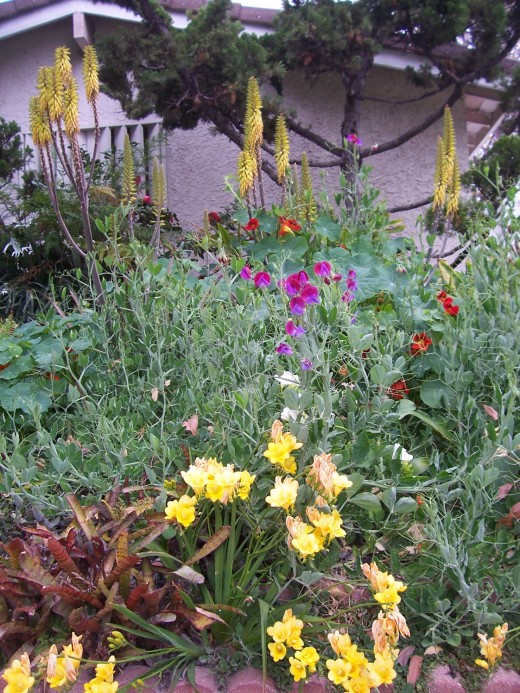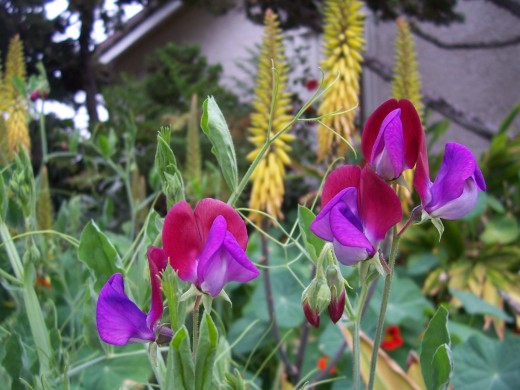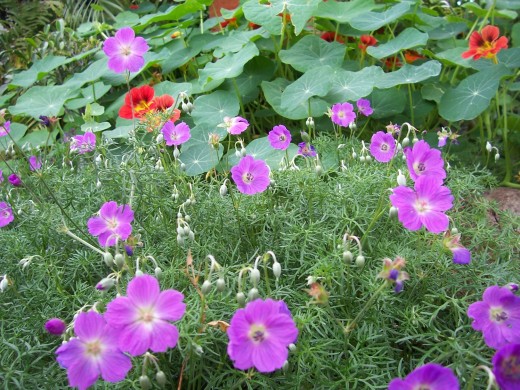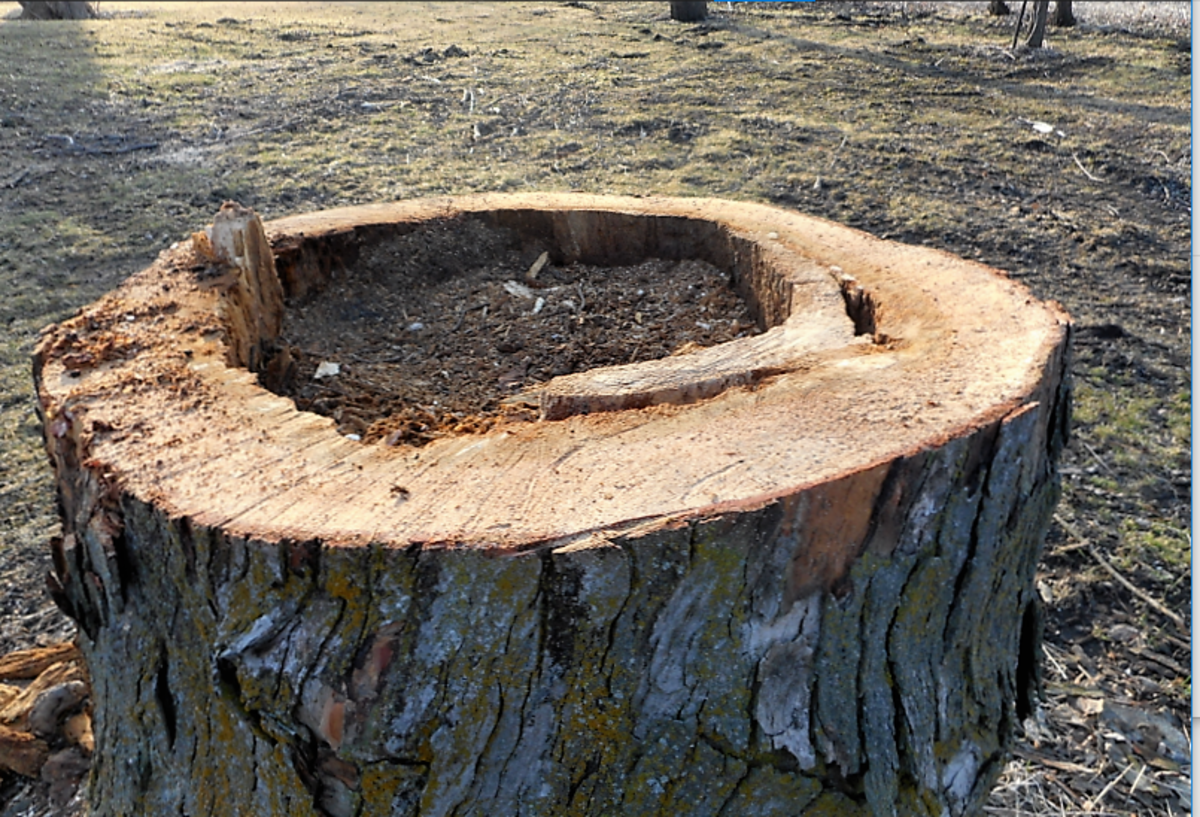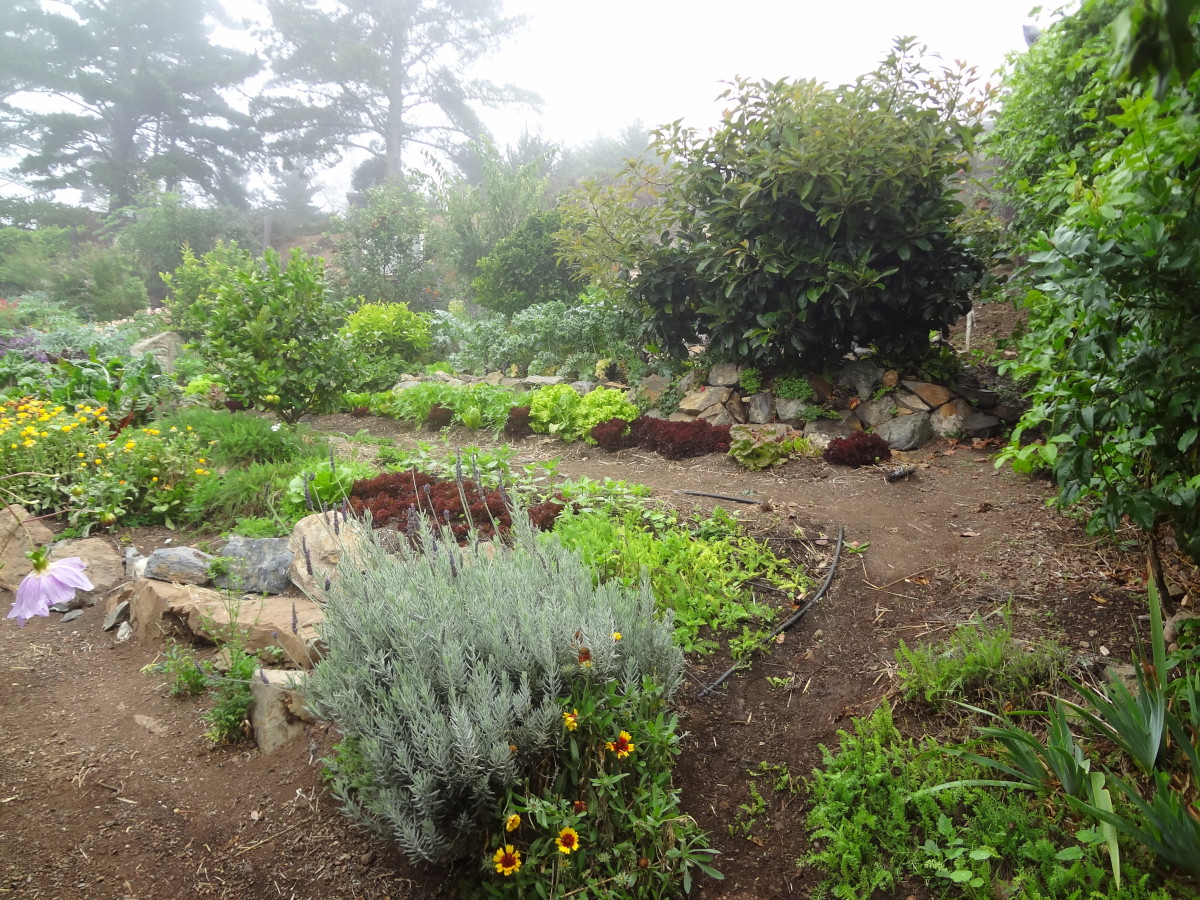- HubPages»
- Home and Garden»
- Gardening»
- Organic Gardening
Garbage in, Garden Out, The Recycling Gardener, Of Tea and Roses
Gardens are beautiful and functional
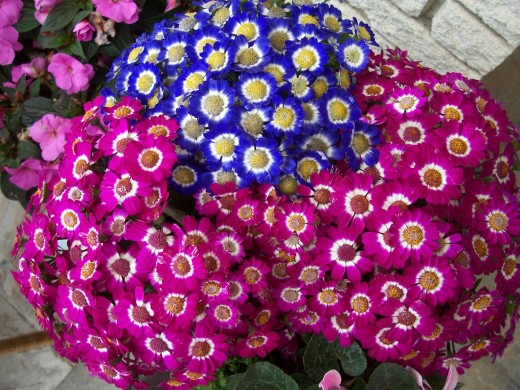
So I was dumping my tea on my roses....
Julie: Professor, why are you dumping the tea on the Roses?
RN: Well, you are a nurse, so in chemistry you remember various phenyl compounds, don’t you?
Julie: Yes, of course, but why do you want them in your garden?
RN: You have rightly concluded that there are phenyl groups in the tea, but probably not that there are many thousands of them, in fact statistically there may be 40,000 different phenyl compounds, many of which are found in black tea, far less in green tea, but still, very good for you, and the soil organisms, and then the plants in your garden.
Julie: Why black tea, why not green tea?
RN: Well, think about it, let’s use the major tea antioxidant ECGC as an example. Lots of this in green tea, it it the strongest antioxidant and by far the major antioxidant by weight. What happens when you ferment the tea to make black tea?
Julie: You get hundreds of smaller phenolated antioxidants.
RN: Precisely! If I had images of various phenyl compounds and sugar compounds and simplified them to only show the carbon backbone you would see just how much carbon is found in any plant, but also how many are classified as lignin, a starchy fiber, and these break down by a specific group of enzymes into all the tea related antioxidants. Phenyl is that hexagonal ring that is almost everywhere in organic chemistry, and is very valuable to nearly every organism and every process in biology at one point or another, including my Roses.
Julie: How do they help your Roses?
RN: When some of these carbons break down, usually via fungi and bacteria attacking them. They break down into thousands of smaller pieces if for no other reason that their potentially enormous size, all of these smaller pieces can be used by fungi and bacteria to improve your soil, then called humates, derived from the word humus, mulch, if you will.
Think of it as a glass bowl that hits a hard tile floor after being dropped from some height. You would end up with not only thousands of pieces, but they would all be different sizes and shapes, so it really does not make sense to talk about all of these or to identify what each does as if anyone knew all of them, or knew everything they did. Rather, it is easier to simply describe them as broken pieces of a larger item.
Julie: Yes, I get that, buy how do they help your Roses?
RN: I think that glass analogy makes sense and simplifies the problem. Just know there really are thousands of compounds just from this one group of chemicals, polymers, really, that break down into useful carbon compounds in the soil and just from this one substance, lignin. All the other compounds do similar things. All are useful in the soils and ether originally came from the soil (minerals, water, nitrogen, carbon) or came from the air (carbon, water, nitrogen) or were made by the plant so they are more useful to other organisms either as direct food or as they break down into the environment. They eventually break down to carbon dioxide and its liquid form carboxylic acid, which can be taken up by the plant, respectively by the leaves and roots and when the carboxylic acid attaches to a mineral it increased the amount of minerals the plant can take up, but even before that as various humates it does the same, sometimes simply allowing the mineral to cross the root tip barrier, in other word it acts like a ligand, like insulin does for sugar entering our cells, and other times, the smaller ones directly enter the root of the plant being converted into CO2 inside the plant.
Julie: So this improves the soil?
RN: Yes, and soil chemistry, soil life! But helping to making it a little more acidic which help to transport minerals and organic compounds into the plants. Remember when we visited the rainforest and all the carbon laying on the ground in different forms? When you think about gardening think about all the different things that happen in that rainforest be it on the Washington peninsula or in Hawaii, there are just different plants and a few different biota, but the same processes.
Here is something many of us do daily where we can see this. If you drink tea, but leave the tea on the stove you will end up with what my kids called “floaties.” Small rafts of floating antioxidant masses that are, from a molecular viewpoint, huge. You could measure them in millimeters rather than angstroms.
Where did they come from, and what are they? They were not there a few minutes before. For simplification, let’s just call them carbon compounds. They were already in the tea before it was kept over the heat too long, but in a different form, in other words, they didn't just pop into existence. Things don’t do that and that’s easy enough to see; we don’t drive down the street and suddenly something pops into existence in front of our car. Life would be very short if this happened too often. Not good.
But, for some reason, when heat was present they formed these very large groups, and they are all different, and, if you stir them, they break into smaller pieces, so these larger molecules are held together by Vanderwall or hydrogen bonds.
In the case of tea, it is easy to explain. These “floaties” are very large complex phenyl compounds caused by the antioxidants linking together. Phenyl is a carbon ring of six carbon and five hydrogen atoms, and then one open link which connects to something else. In this heat they disconnect from the other groups and connect to each other.
Here is an analogy: Make a ring of your thumb and first finger by putting the finger tips together. Each knuckle is a carbon atom and so is to combination of the finger tips, but the knuckles have hydrogen attached, and the fingertips are grabbing something else.
Now, to really make this overly simple, think of fungi and bacteria doing just the opposite, breaking down complex carbon molecules into things the plants can take up and use to grow. Something your Roses can use. Then, when broken down small enough, perhaps into carboxylic acid (CO2 + water, likely carrying a mineral atom), it can enter the plant and be used to make sugar, fibers, and so forth. So the plant makes things more complex, which can then later be broken down by the fungi, and so forth.
So this is a cycle. Don't break the cycle.
This really is all we are talking about, but I gave you many things you haven't thought about using in the garden, and likely because you just don't know what they are. You were talking about making bread last week and spilling the baking powder, and I’m sure you simply dumped this down the drain, didn’t you?
Julie: Yes I did, what would you do with it?
RN: Put it on my flowers.
Julie: Your flowers!?
RN: Yes, it is one or more mineral salts, potassium hydrogen tartrate, calcium acid phosphate, sodium aluminum sulfate and sodium bicarbonate, all of which your garden can use adding their respective minerals and their other groups, the bicarbonate, sulfates or other acid groups.
Julie: Well, OK, both tea and baking powder can be used in the garden. I’m glad I asked.
RN: No charge for the lesson...
You have to grow some flowers...
